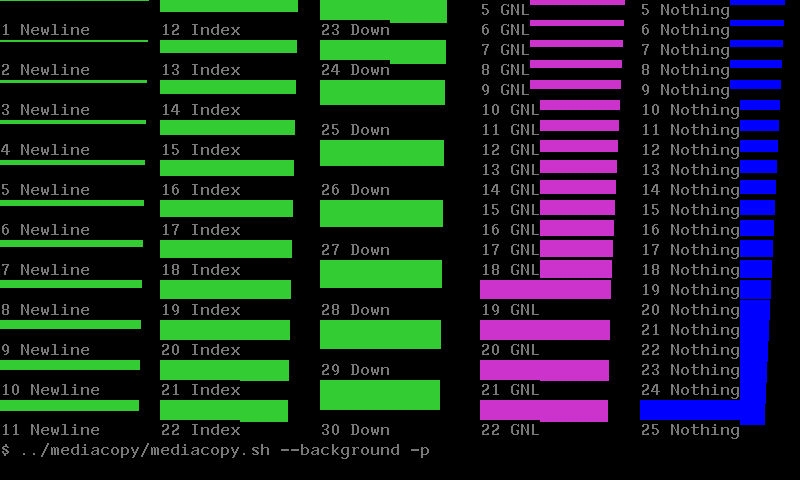Hi @dnkl. The VT340's algorithm should not be followed too strictly in modern terminals. Despite what the documentation implied, it uses a fast heuristic which relies on the character cell being 20 pixels tall. That algorithm was faster but included a glitch which should not be copied.
If you are designing a terminal that uses characters that are not 20 pixels tall, the algorithm does not apply and will have to be adapted in one of two ways:
- I suggest using the simpler algorithm which I believe you referred to as "bottom pixel". Such a terminal will be compatible with the way that programmers presumed the VT340 always worked and that DEC's documentation would lead a reasonable person to believe. All known original programs and sixel images for the VT340 will work correctly with that algorithm. Additionally, it is easily programmed for as one knows exactly how to draw text under any graphic: just send a newline.
- j4james has suggested limiting the sixel image resolution so that, regardless of the font resolution, each character cell shows only 10x20 pixels. This might be useful for someone who wants to run hypothetical VT340 software from thirty years ago which knows about and works around the VT340's cursor positioning quirk. One major downside is that graphical resolution is limited and the only way to increase it is to make the font so tiny it is unreadable.
I strongly believe the first method is the correct one for most modern terminals. It lets programmers easily create software that integrates graphics with character cell text interfaces, which is to me what makes sixels useful.
If you've read my discussion with j4james about whether this VT340 behavior is a "glitch", you'll see that even though he believes it is the historical behavior and thus correct for any terminal that claims to emulate a VT340, neither of us could come up with an easy solution for application programmers who want to just splat a sixel image on the screen and show some text underneath it. Since a workaround requires the application to model the internal state of the VT340, no sane program will ever intentionally use this odd behavior, whether it is technically a glitch or not.

Sixel capable terminal emulators have gotten cursor placement (after emitting the sixel) wrong since the beginning. They usually put the cursor on a new line under the sixel. This means the terminal content may scroll, if a sixel is printed on the last row.
However, it's not how the VT340 did it. The simplified explanation is that it places the cursor on the last line of the sixel. Thus, if you want to print text under the sixel, you first have to print a newline.
The real algorithm is slightly more complex than that. A sixel is 6 pixels tall. This means it can cover two text rows. The DEC cursor placement algorithm puts the text cursor where the top pixel is. This means there are times when two newlines are required to print text under the sixel.
A number of terminals have started to implement the correct behavior. Terminals that implement the DEC placement algorithm are foot, contour, DomTerm and WezTerm. There may be more that I'm not aware of. XTerm is close to correct, but last time I checked, it placed the cursor on the bottom pixel (i.e. you always need a single newline).
Right now, running
chafa <image> && echo "XXXXXX"will look something like this in e.g. foot:A bit more information here: